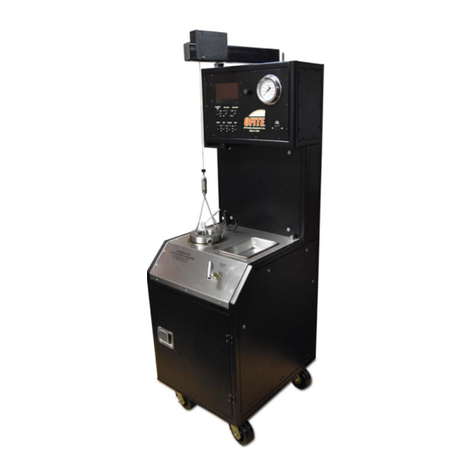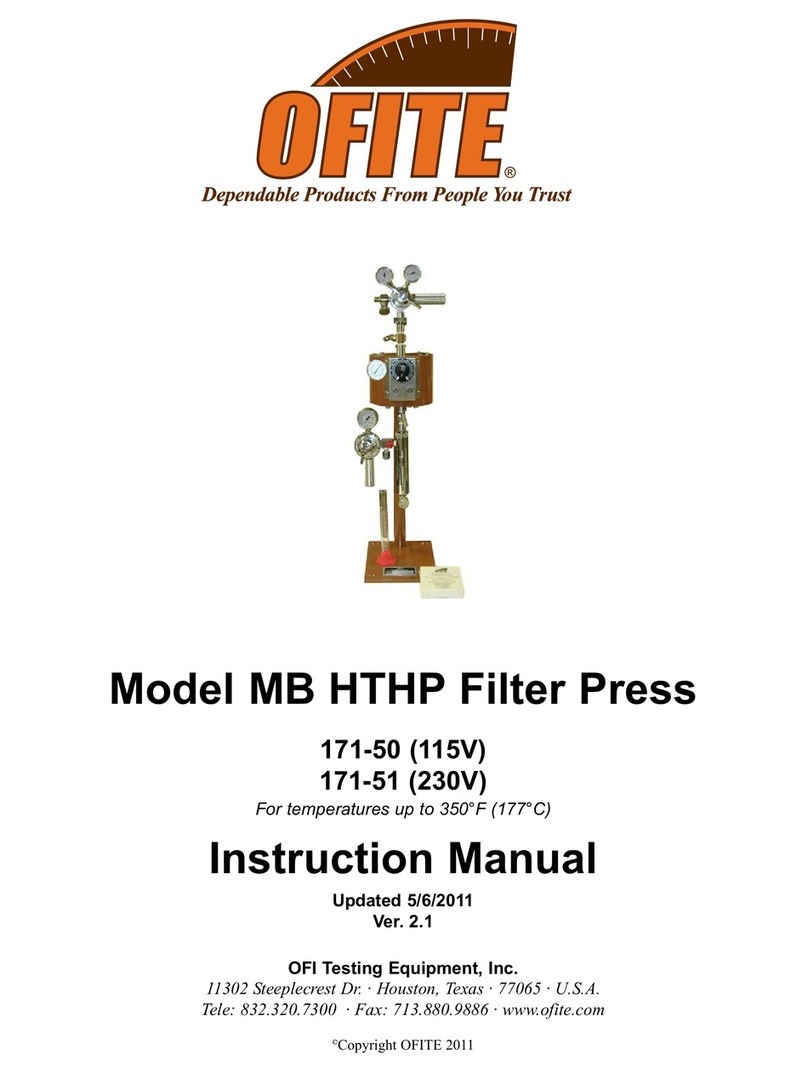
OFITE, 11302 Steeplecrest Dr., Houston, TX 77065 USA / Tel: 832-320-7300 / Fax: 713-880-9886 / www.ote.com 3
Components #142-58 O-ring for HTHP Coupling
#143-00 Regulator
#143-02-10 CO2 Puncture Head Assembly
#143-02-13 O-ring for Puncture Pin Holder Assembly, CO2Cartridge
#143-02-14 O-ring for Puncture Pin Holder Assembly
#143-03 Barrel for CO2Cartridge
#145-601 Hydrogen Sulde Test Papers, Package of 100
#151-01 Dispersion Tube
#151-02 Dräger Tube, Hydrogen Sulde 100/1, Range: 100 - 2,000 PPM
(Low Range)
#151-03 Dräger Tube, Hydrogen Sulde 0.2%/A, Range: 0.2 - 7% by Vol-
ume (High Range)
#151-04 Dräger Tube, Carbon Dioxide 0.01%/A, Range: 0.01 - 0.3% by
Volume
#151-06 Gas Bag
#151-07 Stopcock
#151-08 API Flow Meter Tube
#151-09 Dräger Hand Pump
#151-10 O-ring for Dräger Pump
#151-11 O-ring for Flow Meter Tube
#151-12 O-ring for 2nd and 3rd Chambers
#151-13 O-ring for 1st Chamber
#151-14 Rubber Hose, ¼" OD × " ID, 1' Length
#151-14-1 Nylon Tube, 3" Length
#151-16 Rubber Septum, Qty: 2
#151-17 Octyl Alcohol (Defoamer), 2 oz.
#151-53 Carrying Case
#153-34 Glass Pipet, 1 mL × mL
#153-40 Glass Pipet, 10 mL × mL
#153-63 10 cc Disposable Syringe with Needle
#230-15 *Sulfuric Acid, 5 N, 2 oz., (UN #2796)
Optional:
#153-53-9 Magnetic Stirrer, 1,500 RPM, 115 Barnant (for oil-mud analysis)
#151-20 Kit for Determining Active Suldes in Oil-Based Fluids:
#151-17 Octyl Alcohol Defoamer, 2 oz.
#151-20-1 *Citric Acid, 2M, Demulsier, IPA Solution, UN #1219, 16 oz
#151-20-2 Sample Injection Needle
#153-29 Glass-Tip Syringe, 2 CC
#153-29-1 Glass-Tip Syringe, 5 CC
#153-29-2 Glass-Tip Syringe, 10 CC
#153-66 Disposable Syringe, 20CC































